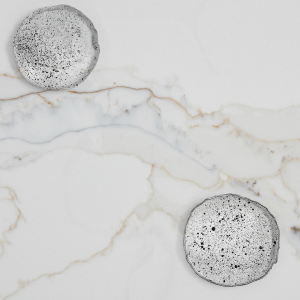Having a beautiful countertop in your home is a true testament to your taste and style. Whether you have chosen a stunning marble, a durable granite, quartz, or any other type of countertop material, it is essential to learn proper care, maintenance, and countertop stain removal. One of the most common challenges homeowners face is dealing with deep stubborn stains. In this blog post, we will share expert tips on how to deal with coffee stains, vinegar stains, egg stains, and other common quartz countertop stains.
1. Coffee Stain
Coffee stains can be quite stubborn and can leave unsightly marks on your countertop. To remove coffee stains from your countertop, start by blotting the area with a cloth, rag or paper towel. Then, mix warm water and mild dish soap, scrub the stain gently, and rinse thoroughly, no need for bleach, or nail polish remover.

2. Vinegar Stains
Vinegar is a versatile and commonly used household cleaner, but it can cause stains on certain countertop materials such as marble and granite. To remove vinegar stains from certain countertop materials like marble and granite, act quickly by blotting the area and creating a paste with baking soda and water. Let the paste sit for 15 minutes, then gently scrub the stain with a soft brush or sponge.
3. Egg Stains
To remove egg stains from countertops, wipe away any excess residue, then scrub the area with a solution of warm water and mild dish soap. Rinse and dry with a soft cloth. If the stain remains, try a mixture of hydrogen peroxide and water, but test it on a small area first.
4. Other Stains
In addition to coffee, vinegar, and egg stains, there may be other stains that can mar the appearance of your countertop. Whether it’s a stubborn grease stain, a colorful fruit juice stain, or a tough ink stain, here are some additional tips to help you remove them effectively.

For grease stains, start by blotting away any excess grease with a clean cloth or paper towel. Then, sprinkle a generous amount of baking soda over the stained area and let it sit for about 15 minutes. Afterward, scrub the area gently with a soft brush or sponge, working the baking soda into the stain. Rinse the area thoroughly with warm water and dry it with a soft cloth.
When dealing with fruit juice stain removal, it’s important to act quickly. Begin by blotting the stained area with a clean cloth or paper towel to remove any excess liquid. Mix a solution of warm water and mild dish soap, and gently scrub the stained area using a soft brush or sponge. Rinse the area thoroughly with clean water and dry it with a soft cloth.
Ease of Maintenance with Lucciare Countertops
Lucciare® surfaces are designed to last—and since they are hard and non-porous, they’re very easy to clean and maintain, requiring no sealing or polishing. Maintaining the beauty of your Lucciare countertops is easy, thanks to their durable and high-quality construction. Remember to always test any cleaning solution on a small, inconspicuous area before applying it to the quartz countertop stain.
For basic day-to-day wear, we advise simply using lukewarm water on a paper towel (or clean soft cloth) and a small amount of a gentle soap or mild detergent to clean your countertops. If more vigorous cleaning is needed, use a nonabrasive / non-bleach household cleaner, then rinse with lukewarm water and dry right away with a clean soft cloth or paper towel. Avoid abrasive ones.
Should you need to remove stubborn debris or adhesives such as tape, nail polish or sticky foods, be sure to scrape excess substances from the surfaces—a plastic putty knife is ideal for gently removing common adhesives. Once removed, use soap and water or a non-abrasive cleaner to wipe away any residuals.

Lucciare® has been formulated to resist permanent staining when exposed to the myriad of liquids, spices, and other “staining agents” commonly used. However, we recommend you wipe clean (as per above) any liquid or food spills right away.
Given the polished finish on Lucciare surfaces, it’s common for fingerprints, metal marks, and other basic wear and tear to show. In most cases, a basic cleaning as outlined above will restore surfaces. Please also be aware that there is no need to ever use any topical treatments, conditioners, or sealers on Lucciare surfaces.
Lucciare Surfaces are formulated to be scratch and heat-resistant. However, since they are not scratch and heat “proof”, we recommend you always use a cutting board and trivets or pads as needed. Please do not cut, dice, or chop anything on your countertop.
Although Lucciare surfaces are considered non-porous, if it is your desire to disinfect your countertops, we recommend any of the following disinfectants which are compliant with the Centers for Disease Control and Prevention guidelines:
Lysol® Disinfectant Spray.*
70% Isopropyl Rubbing Alcohol.*
Avoid using highly alkaline cleaners, harsh chemicals, or solvents.
*Please Note: If taking the extra step to disinfect as we recommend, please be sure to use lukewarm water and a paper towel to remove any disinfectant residual.
With some basic care and maintenance, your Lucciare surface will look fresh, clean, and polished—as beautiful as the day they were installed.
Care and Maintenance cleaning products commonly used for Lucciare Surfaces:
Windex® Multi-Surface Cleaner
Lysol® products
Formula 409® Glass and Surface Cleaner
Simple Green® (lime-scale remover)
For more information and to explore the different types of Lucciare countertops available, visit www.lucciare.com or contact us for sample requests!

